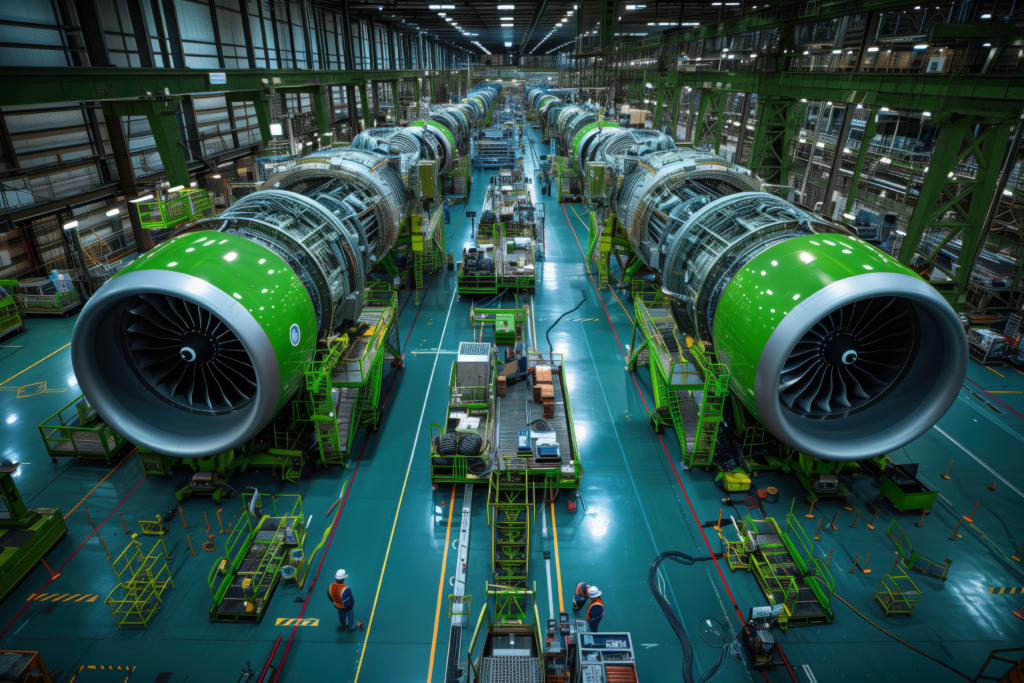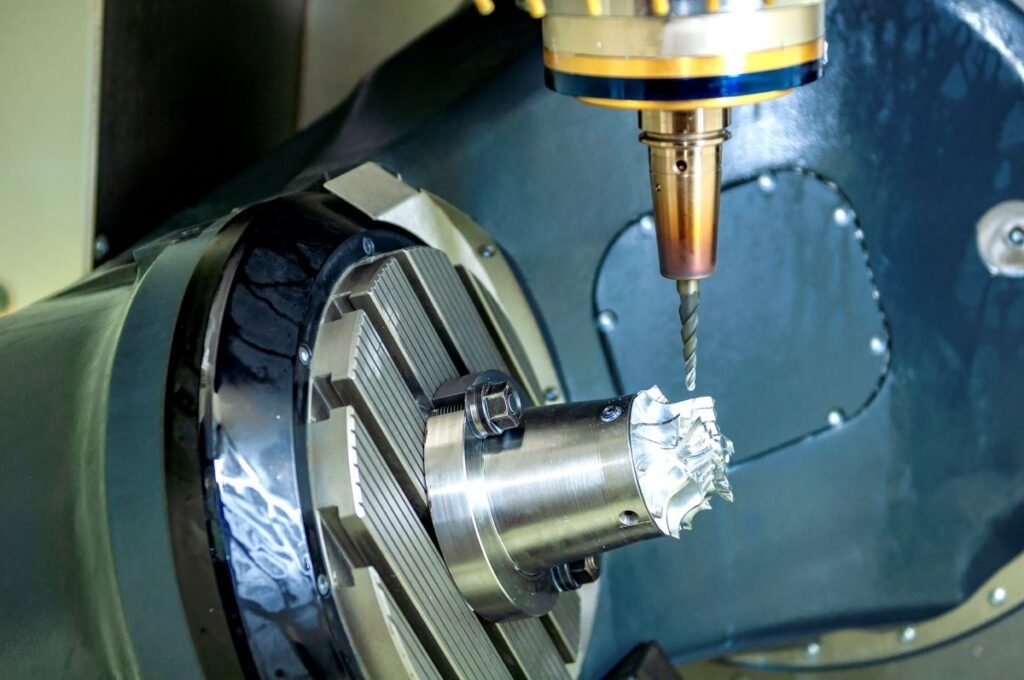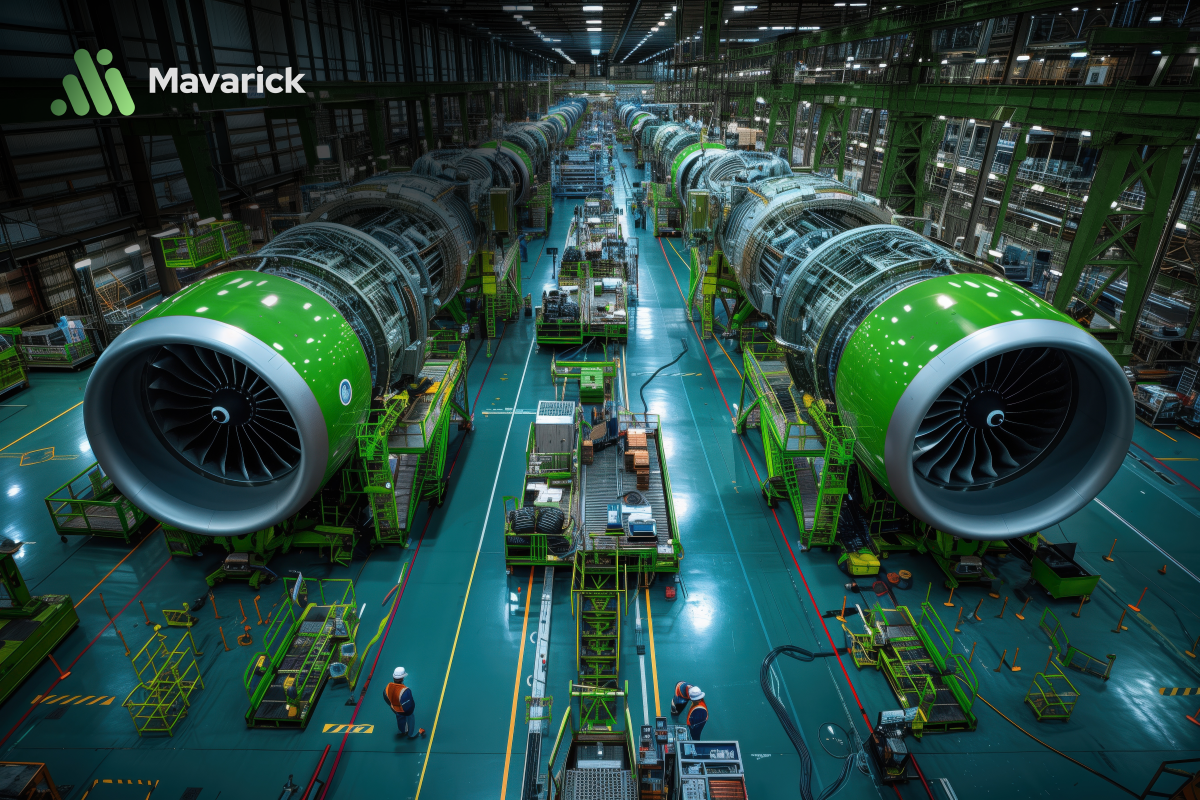Aerospace sustainability is a tough equation—balancing efficiency, costs, and carbon reduction. With rising regulations and mounting pressure to decarbonize, traditional methods fall short. But what if AI could simplify the challenge—automating carbon tracking, uncovering hidden efficiencies, and turning sustainability into a competitive advantage?
Key Takeaways
- Energy Savings: The initiative achieved a 17% reduction in annual energy consumption, with furnace savings ranging from 4% to 25%.
- Carbon Emissions Reduction: Specific carbon emissions per part were reduced by 20%, contributing significantly to sustainability goals.
- Cost Optimisation: Energy cost savings matched the 17% reduction in consumption, offering substantial financial benefits.
- AI-Driven Insights: Real-time data collection and advanced analytics identified inefficiencies and provided actionable recommendations to optimise furnace operations.
- EU-Funded Initiative: The project was supported by the European Union, underscoring its alignment with global sustainability standards.
- Sustainability Leadership: The organisation reinforced its position as a leader in sustainable aerospace MRO practices.

Executive Summary
A leading aerospace multinational, renowned for its expertise in Maintenance, Repair, and Overhaul (MRO), faced significant challenges in reducing energy consumption and carbon emissions within its furnace operations. To tackle these issues, Mavarick implemented its AI-Driven Sustainability Platform, a comprehensive end-to-end (E2E) data management solution, designed to identify and mitigate inefficiencies effectively.
This project- an EU-funded initiative delivered outstanding results, including a 17% reduction in furnace energy consumption and a 20% decrease in specific carbon emissions per part. Amidst record-high European energy prices, these improvements translate into considerable cost savings, solidifying the company’s standing as a trailblazer in Sustainable Aerospace MRO.
Testimonial
“Mavarick’s innovative platform helped us streamline our operations, improve energy efficiency, and reduce carbon emissions, all while aligning with our sustainability objectives seamlessly.”
– Senior Executive
About the Client
A leading aerospace multinational, renowned for its expertise in Maintenance, Repair, and Overhaul (MRO) services for turbine components, operates within an energy-intensive sector where furnaces can contribute over 30% of total operational energy usage.
Committed to sustainability and reducing its environmental impact, the company has consistently prioritised practical approaches to optimising energy efficiency. As part of a European Union-funded initiative, it implemented an advanced, data-driven solution to improve operational efficiency and significantly reduce carbon emissions in its furnace operations, setting new benchmarks for sustainable aerospace practices.

The Challenge
The organisation faced several operational hurdles, including:
- High Energy Consumption: The furnaces required a significant amount of energy annually, with operational inefficiencies largely attributed to scheduling challenges.
- Carbon Emissions: Scope 2 emissions from the furnaces needed to be measured and optimised.
- Manual Processes & Data Accessibility: Data collection and analysis were resource-intensive, and access to essential data wasn’t always possible.
- Cost Pressures: Rising energy prices demanded operational cost reductions without compromising production schedules and quality.
These challenges highlighted the need for an advanced, data-driven approach to sustainability optimisation of the site’s furnaces.

The Solution
Mavarick implemented its AI-Driven Sustainability Platform, an E2E data management solution, to provide the organisation with their needs:
- Revolutionising Aerospace MRO with AI & IoT for Sustainable Efficiency
Mavarick leverages IoT and AI-driven analytics to optimise energy efficiency, enhance predictive maintenance, and streamline operations in the aerospace MRO industry. By integrating real-time data monitoring and advanced automation, Mavarick helps reduce energy consumption and minimise carbon emissions, setting new standards for sustainability and operational excellence.
- Advanced Analytics: The platform’s analytics engines aggregated and processed the data from devices, generating insights into inefficiencies and identifying patterns that manual methods may overlook. For example, it highlighted unnecessary carbon emissions and high energy consumption during gaps in scheduling.
- Carbon Footprint Analytics: Mavarick’s end-to-end data management platform provided continuous visibility into the carbon emissions generated by the furnaces. This enabled the team to identify carbon emissions inefficiencies and take actions to mitigate emissions.
- AI-Driven Recommendations: Leveraging machine learning, the system provided actionable recommendations for each furnace, such as optimal scheduling adjustments and load management. These recommendations were dynamically updated based on real-time data.
Adoption & Integration
The project was executed in five comprehensive steps, ensuring seamless integration and maximum impact:
- System Design: The project began with designing the E2E system architecture required for the organisation, combining edge devices, advanced analytics, and AI models (ML and LLM). This phase involved data exploration, variable identification, and alignment with their operational setup to ensure compatibility and effectiveness.
- System Development: Edge devices and gateways, were configured and integrated with the existing data management infrastructure. Updates were made to Mavarick’s core analytics platform to accommodate the specific needs of furnace optimisation. Additionally, ML and LLM models were developed, trained, and benchmarked using historical data to ensure accuracy in predictions and recommendations.
- Testing and Validation: The system was deployed across the furnaces for live testing. This phase validated the accuracy of data transmission, the functionality of analytics, and the effectiveness of AI-driven recommendations under real-world conditions. User feedback was collected to identify areas for refinement.
- AI Model Refinement: Based on insights from testing, the AI models were fine-tuned to improve their prediction accuracy and adaptability. This iterative process included further data cleansing, transformation, and model optimisation to ensure the system’s reliability.
- Deployment and Measurement: The fully integrated system was rolled out across all furnaces. Energy optimisation and carbon reduction initiatives were identified based upon the AI-driven insights generated. Detailed reports quantified the achievable energy savings, emissions reductions and cost savings with operational changes.
Results and Impact
The collaboration yielded significant, measurable results:
- Carbon Emissions Reduction: A 20% decrease in Specific Carbon Emissions / Part Carbon Footprint potential.
- Energy Savings: A 17% decrease in total annual energy consumption. Savings per furnace ranged from 4% to 25%.
- Cost Savings: Equivalent to 17% of the Furnace Energy Costs (Confidential).
Achieving sustainability in aerospace isn’t just about meeting regulations—it’s about making carbon management smarter, more efficient, and actionable. By integrating AI-driven automation and real-time data insights, this aerospace leader didn’t just reduce emissions; they unlocked new efficiencies and cost savings.
The lesson? With the right technology, sustainability isn’t a challenge—it’s an opportunity to drive operational excellence and long-term resilience. Ready to optimise your operations and achieve sustainability goals? Contact Mavarick today to explore how our AI-driven solutions can transform your operations.

